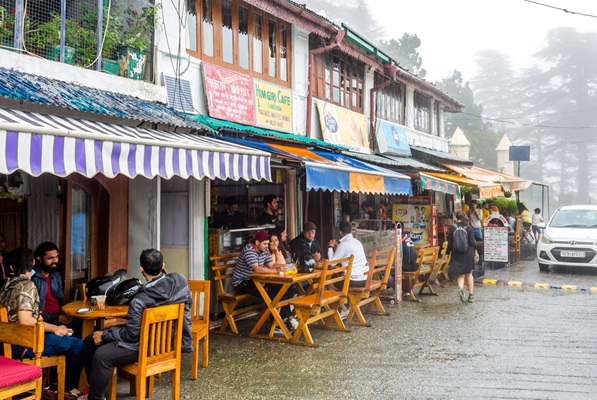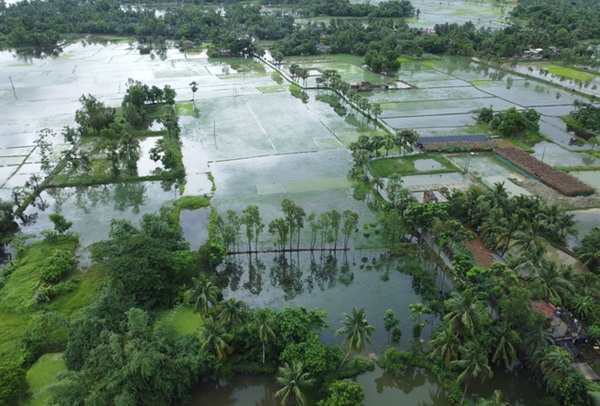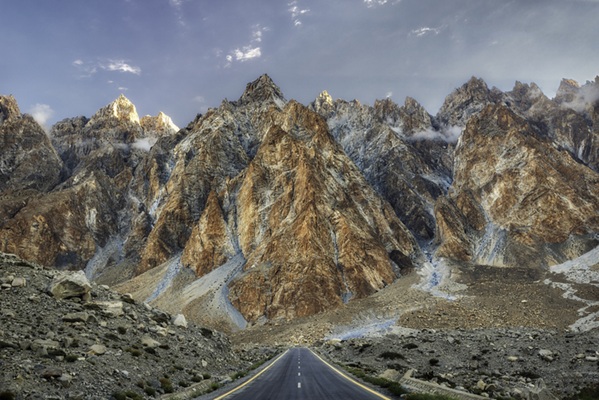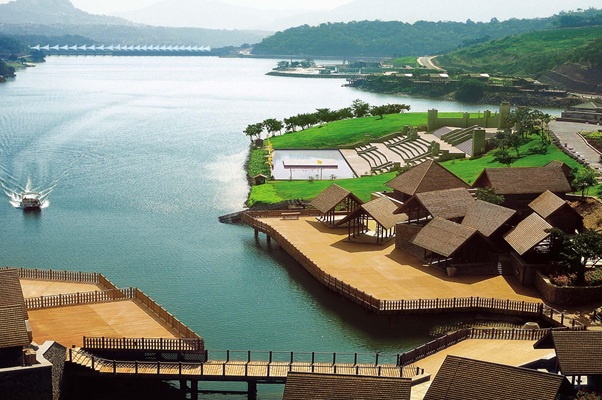.png)
Where Silence, Air, and Fragility Meet in a Changing World
RBI policy, investment caution, climate finance, and trade gaps show how fragile systems and decisions define what we preserve and what slips away.

By Phynix
Phynix is a seasoned journalist who revels in playful, unconventional narration, blending quirky storytelling with measured, precise editing. Her work embodies a dual mastery of creative flair and steadfast rigor.
October 6, 2025 at 4:56 AM IST
Dear Insighter,
Three weeks in Mussoorie and Landour during the pandemic taught me what air was supposed to feel like. Not Mumbai’s humid assault or Delhi’s particulate soup, but actual air that slips into your lungs like the world saying sorry for what it’s been. The Mall Road, shut to traffic, felt like a street that had remembered how to breathe. Everyone seemed nicer and calmer, as if the altitude had quietly drained the irritation out of them.
We ate at Kalsang almost every day and binged on mokthuk, thukpa, lamen, momos. The momo sauce alone was reason enough to go back. When we asked for the recipe, the waiter said it belonged to the owner, who was abroad somewhere. Singapore, maybe? My memory’s fuzzy on that. The place sat at a turn of a lane, slightly higher than its neighbours. The whole thing was painted red, with Chinese lanterns dangling like commas. Loud in colour, quiet in mood.
The walk from our hotel each day was a reminder of why we travel at all. Even when the world felt paused, we still needed to move. We even did a one-day dash to Rishikesh and Haridwar: both oddly peaceful, almost unreal. A local told us it was the first time he hadn’t seen litter in the Ganga. I remember standing on the Ram Jhula, watching the river spread out beneath me, beautiful and a little heartbreaking at the same time. Was this serenity a permanent feature, or a temporary gift from a paused world?
Uttarakhand had opened its doors early to outsiders after the lockdown. Landour was where I finally understood Ruskin Bond’s lifelong allegiance; the place welcomed you like a warm hug despite the chill. The Landour Bakehouse served crepes and croissants that tasted perfect. But I doubt I’ll return to Mussoorie soon. Overtourism has a way of turning sanctuaries into selfie stops. Sitting in a flat in Mumbai I reminisce about those weeks. Could I live like that? Permanently? The answer is probably no. But the question lingers like mountain mist.
That tension between the preserved memory and the compromised reality echoes in Michael Debabrata Patra’s meditation on glaciers. He writes of ancient ice retreating, of warnings written in ice that we've chosen not to read. Where glaciers meet the sky, he notes, beauty alone reigns. But beauty is fragile. It’s the same story of fragile balance that Arvind Mayaram tells about the global economy. Fifteen years after Pittsburgh, advanced economies still evade the discipline they impose on others.
This brings us to the Reserve Bank of India’s own tightrope walk. The October policy held rates, but as Ashima Goyal questions whether the RBI's forward-looking stance truly supports growth. The former MPC member argues that high real rates, averaging 1.9% amid slumping growth, stifle momentum when inflation forecasts dip and core trends hover at 3%. She urges action over mere talk to anchor expectations, warning that without cuts, perceptions entrench.
While Shubhada Rao and her co-authors credit the RBI for anchoring long-term inflation expectations, they argue the growth baton must now pass to non-rate levers. The hunt for a terminal repo rate, as Kalyan Ram cautions, may be a distraction in a world of fragile premises. The central bank, he notes in another piece, has wisely corrected its June communication misfire, reopening a door it had prematurely closed. Mint Owl seconds this, observing that October healed June’s wounds not with action, but with better dialogue.
Not all share this view. Dhananjay Sinha argues the RBI’s upbeat narrative jars with a reality of stagnant earnings and weak credit demand, echoing pre-2008 decoupling delusions.
Yet, the RBI’s structural shifts are bold. Sachin Malhotra applauds the break from orthodoxy, like migrating banks to an Expected Credit Loss regime. On the global stage, its baby steps on rupee internationalisation, as R. Gurumurthy calls them, are symbolic nudges needing scale. The Quixotic Banker adds that without guardrails addressing trade gaps, the rupee’s journey abroad will be short.
The pre-policy debate was a study in contrasts. Madhavi Arora made an overwhelming case for an immediate cut, while N. Srinivasa Rao advocated for a stability-preserving pause. Underpinning it all, Karan Mehrishi questioned why the RBI hasn't defined CRR as a true Lender-of-Last-Resort tool. The BasisPoint Groupthink summed it up: October was a time to recount and reset.
Beyond rates, the RBI’s relaxation of bank lending curbs, as Krishnadevan V notes, lets banks finally challenge NBFCs. But as TK Arun warns, this unguarded lending won’t fix growth without real investment demand. Meanwhile, AU Small Finance Bank’s licence upgrade signals a new mobility, a reward for stability and scale.
Yet, India’s biggest potential engine remains dormant. Krishnadevan V highlights the paradox: only 9.5% of Indian households invest in securities, with 79.7% prioritising capital preservation. This isn’t a lack of knowledge, but a deep-seated caution that finfluencers, not SEBI, are filling.
This need for pragmatic, not dogmatic, solutions is global. Sharmila Chavaly argues that climate finance is trapped in an ideological tug-of-war, stifling the very development needed to build resilience. We're using 20th-century tools for 22nd-century problems. Nowhere is this disconnect more visceral than in trade, where shrimp tariffs, as detailed by Hemachandra Padhan and team, are measured in loans unpaid and livelihoods lost, not just percentages.
Even politics, as Amitabh Tiwari’s analysis of Bihar shows through his ABCD seat classification, is a game of navigating stark regional disparities and moderate seats.
So, I’m left in my Mumbai apartment, between the memory of clean mountain air and the reality of a complex, simmering world. The peace I found was real, but like the glaciers Patra grieves, it was a snapshot of something fragile. The real work isn’t in escaping to places like that, but in building policies that make sure they don’t end up as footnotes in a story of what was lost.
Until next time, may your air stay clean, your momos perfectly steamed, and the policies a little less frozen than the glaciers we’re watching disappear.
Also Read
- Risk-Based Premiums Must Lead to Higher Bank Deposit Insurance Coverage by Mint Owl: RBI’s move aligns deposit insurance premiums with bank risk, rewarding stability and higher protection for depositors.
- India’s Growth Story Meets Its Consumption Wall by Shilpashree Venkatesh: Tax incentives lift demand temporarily, but slowing income, weak investment, and tariffs threaten India’s growth momentum.
- Indian Exports May be More than Just Faltering by Rajesh Mahapatra: Rising tariffs weigh on exports despite temporary US shipment surges, pressuring growth prospects.
- India’s Economic Balancing Act Faces Tariff and Oil Test by Alok Kumar Mishra and Iti Vyas: Reforms aim to cushion growth, but crude and tariff shocks risk tipping the economy off its tightrope.
- Basel Guardrails must Balance Stability, Innovation for NBFCs by Babuji K: NBFCs need clear Basel guidelines that ensure resilience without stifling innovation.
- Sound Corporate Governance Needs Institutional Investors to be More Vocal by Srinath Sridharan: India’s silent institutional investors hold power to challenge promoters but rarely exercise it.
- Raising Wheat’s MSP is Easy. What the Crop Needs is Real Reform by G. Chandrashekhar: MSP hikes don’t address heat stress, yield gaps, land limits, and structural policy issues affecting wheat.
- Kharif Crop Prospects Satisfactory Overall, Risks from Excess Rainfall Remain by G. Chandrashekhar: Seasonal rainfall matters less than its timing and distribution, which are crucial for crop outcomes.
- Why India’s Marriage Market Punishes Working Women by Amitrajeet A. Batabyal: Gender norms still penalise women for choosing careers, especially in non-traditional fields.
- Sarci-Sense: The Networking Delusion Where Everyone’s a Connector, Nobody’s a Friend by Srinath Sridharan: Networking often trades real connection for performance, leaving many socially abundant but personally isolated.
- Venkat Chalasani on AMFI, Ethics, and Financial Literacy by Manoj Rane: AMFI CEO Chalasani discusses the transformation of India’s mutual fund industry in this first Market Makers conversation.
- Regulated Pre-IPO Markets Can Generate Billions in Missing Tax Revenue by Chandrika Soyantar: Regulating pre-IPO markets could plug massive tax leakage and unlock billions in revenue.
- Rupee’s Strategic Faultline-SWOT Analysis by Babuji K: The rupee’s stability hinges on oil dependence, export narrowness, and dollar reliance more than daily volatility.
- Nobel Committee’s Trump Problem by R. Gurumurthy: Trump’s legacy defies conventional awards, inspiring thought on unintended innovation.
- The World is No More Flat: Rethinking Globalisation by Srinath Sridharan: Globalisation is rewiring under nationalism, climate shocks, and fragile supply chains; firms must adapt.
- Supreme Court’s Ruling May Set the Course for Land Justice in Bihar by Chandan K Jha and Sudipta Sarangi: The ruling could curb fraud, protect the poor, and strengthen development-critical institutions.
- Fiscal Prudence Meets Growth Ambitions: Odisha’s GST Challenge by Hemachandra Padhan: Odisha must balance industrial revival, fiscal discipline, and inclusive growth for GST success.
- India’s Message to the World in the SCO that Everyone Missed by Rami Niranjan Desai: India balanced regional ties while signalling its role as a trusted partner at the SCO summit.
- Truth Beats Spin: Gandhi’s Playbook for Profit by Kirti Tarang Pande: Ethical choices are about cognitive economics, not morality; truth drives sustainable profit.
- Psychology of Unrest - Quantifying Financial Risks of Identity-Driven Clashes by Kirti Tarang Pande: Predictive models using psychology can price social unrest, creating India’s first social volatility index.
- Who Moved My Cheez? Surviving the Everyday Chaos of Lost Objects by Kalyani Srinath: Life’s small daily battles—chargers, chairs, mysteriously moved items—can feel surprisingly epic.



